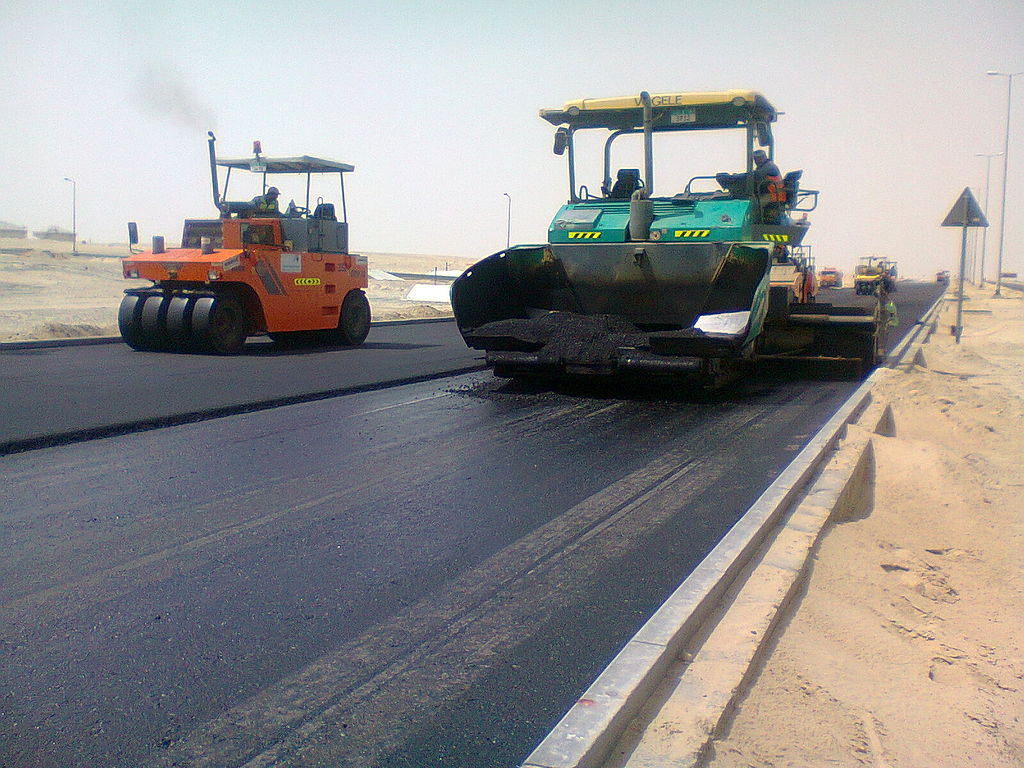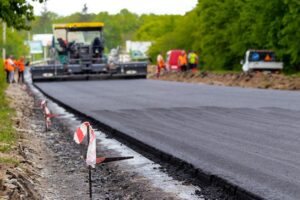The Road Construction Process: A Step-by-Step Guide
Road construction is the process of building or improving roadways, highways, and other transportation infrastructure. It is a crucial aspect of modern society, allowing people and goods to move quickly and efficiently from one place to another. Without properly constructed roads, transportation systems would grind to a halt, and economic growth and development would be severely limited.
In this Blog, we will provide a step-by-step guide to the road construction process, from planning and design to post-construction maintenance. Whether you are a developer, contractor, or simply interested in learning more about road construction, this guide will provide you with valuable insights and information. So, let’s get started!
Planning and Design
The first step in the road construction process is planning and design. This involves conducting a site survey and analysis, defining the road alignment and cross-section, determining the materials and equipment needed, and creating a detailed construction plan.
Site Survey and Analysis: Before construction can begin, the site must be thoroughly surveyed and analyzed. This involves evaluating the existing conditions of the area, including natural features such as terrain, waterways, and vegetation, as well as any man-made structures that may impact the road’s construction.
Defining Road Alignment and Cross-Section: Once the site analysis is complete, the road’s alignment and cross-section are defined. The alignment refers to the path that the road will follow, while the cross-section defines the width and shape of the road.
Determining Materials and Equipment: Once the road’s alignment and cross-section are defined, the materials and equipment needed for construction can be determined. This includes the type and quantity of materials such as asphalt, concrete, and gravel, as well as the equipment needed to transport, mix, and apply them.
Creating a Detailed Construction Plan: Finally, a detailed construction plan is created, outlining the entire construction process from start to finish. This plan includes timelines, budgets, and contingency plans for unexpected events or delays.
The planning and design phase is critical to the success of the road construction project. Proper planning ensures that the project is completed on time and within budget, while also ensuring that the road is safe, functional, and meets the needs of the community it serves.
Pre-Construction
Before the actual road construction can begin, there are several preparatory tasks that need to be completed. These tasks fall under the pre-construction phase, which includes the following:
-
Clearing the site and preparing the subgrade
Clearing the site involves removing any obstructions, such as trees, rocks, or buildings, that may hinder the construction process. The subgrade, which is the natural soil or rock beneath the road surface, must also be prepared. This involves removing any unsuitable materials and compacting the subgrade to create a stable foundation for the road.
-
Installing drainage systems
Proper drainage is crucial in road construction, as it prevents water from accumulating on the road surface and causing damage. During the pre-construction phase, drainage systems such as culverts and ditches are installed to channel water away from the road.
-
Establishing the construction site
The construction site is established by setting up temporary offices, storage areas, and other facilities that are necessary for the construction process. This includes setting up fencing, signage, and safety barriers to ensure that the site is secure and safe for workers and the public.
-
Mobilizing equipment and materials
Once the construction site is established, equipment and materials are brought in to begin the construction process. This includes heavy machinery such as excavators, bulldozers, and graders, as well as materials such as asphalt, concrete, and gravel.
By completing these pre-construction tasks, the construction site is ready for the next phase of the road construction process: the actual construction.
Construction
Once the pre-construction activities are completed, it’s time to start the construction process. This phase involves several crucial steps that must be performed accurately and efficiently to ensure the quality and durability of the road. Here are the main steps involved in the construction phase:
-
Grading and paving the sub-base
The first step in the construction phase is to grade and pave the sub-base. This involves preparing the ground and adding a layer of crushed stone or gravel to create a stable foundation for the road.
-
Installing the base course and binder course
Once the sub-base is completed, the next step is to install the base course and binder course. The base course is made up of a layer of dense graded aggregate, while the binder course is made up of asphalt concrete. These layers provide additional stability and strength to the road.
-
Applying the surface course
After the base course and binder course are completed, the surface course is applied. This is the topmost layer of the road and is made up of high-quality asphalt concrete. The surface course provides a smooth and even driving surface.
-
Installing pavement markings and signage
The final step in the construction phase is to install pavement markings and signage. This includes painting lines on the road, adding reflective markers, and installing signs to indicate speed limits, crosswalks, and other important information for drivers.
By following these steps, a road construction project can be completed successfully, with a road that is safe, durable, and high-quality.
Post-Construction
Once the road surface is complete, there are still important steps to be taken to ensure the longevity and safety of the road.
- Inspecting and testing the road surface: Before opening the road to traffic, the surface must be inspected and tested for quality and safety. This can include testing for smoothness, skid resistance, and pavement thickness, among other factors. Any deficiencies must be addressed before the road can be opened.
- Completing final cleanup and demobilization: After the road is open to traffic, the construction site must be cleaned up and all equipment and materials demobilized. This includes removing any temporary structures, disposing of any waste materials, and restoring the site to its original condition.
- Conducting ongoing maintenance and repairs: Proper maintenance and repairs are critical to ensuring the road remains safe and functional over time. This can include routine inspections, repairs to any cracks or potholes, and regular resurfacing to maintain the integrity of the pavement.
By following these post-construction steps, road construction projects can be completed successfully and safely, with a focus on long-term durability and usability.
Conclusion
After completing the road construction process, it’s important to ensure that the road is properly maintained to ensure its longevity and safety for drivers. Working with a qualified road contractor who follows industry best practices can make all the difference in the success of your project.
In summary, the road construction process involves a series of steps, including planning and design, pre-construction, construction, and post-construction. Each step requires careful planning, attention to detail, and expertise to ensure that the road is built to the highest standards.
At the end of the project, it’s essential to conduct thorough inspections and testing of the road surface to ensure that it meets all safety and quality requirements. Ongoing maintenance and repairs will also be necessary to keep the road in good condition for years to come.
By following the steps outlined in this guide and working with a reputable road contractor, you can ensure that your road construction project is completed on time, on budget, and to the highest standards of quality and safety.



